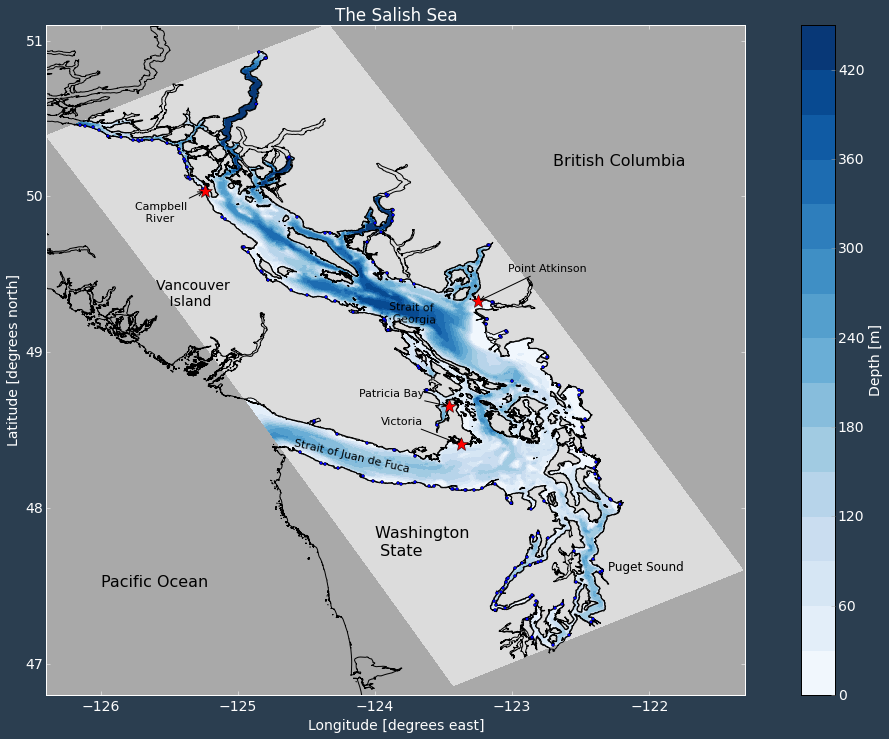New biogeochemical model reveals role of tides in shaping northern Strait of Georgia ecosystem

Elise M. Olson, Susan E. Allen, Vy Do, Michael Dunphy, and Debby Ianson
The University of British Columbia sits on a promontory overlooking the Salish Sea. As you look out over the water, you see its quickly changing variations in color and roughness. That is just the surface! We have run a model (SalishSeaCast: salishsea.eos.ubc.ca) every day since 2014 to capture the motion of the water, the mixing, and the changes in temperature and salinity. Now we have added a biological component so we can see changes in the phytoplankton growth as the phytoplankton blooms in the spring, then dies back due to nutrient limitation and grazing by zooplankton. Events, like wind storms, that resupply nutrients to the sunlit surface waters, can trigger new phytoplankton growth during summer months. In the manuscript, we present the model and its evaluation showing how accurately it represents this seasonal cycle and variability in time and space. We show that strong tidal flow through the narrow Discovery Passage, near Campbell River, leads to turbulent mixing, bringing deep nutrients to the surface. Tidal currents carry these nutrient-rich surface waters into the northern Strait of Georgia, relieving nutrient limitation and allowing phytoplankton to grow, contributing to the region's fish and shellfish productivity.

Strong tidal flow through the narrow Discovery Passage, near Campbell River, leads to turbulent mixing, bringing deep nutrients to the surface. Tidal currents carry these nutrient-rich surface waters into the northern Strait of Georgia, relieving nutrient limitation and allowing phytoplankton to grow, contributing to the region's fish and shellfish productivity.